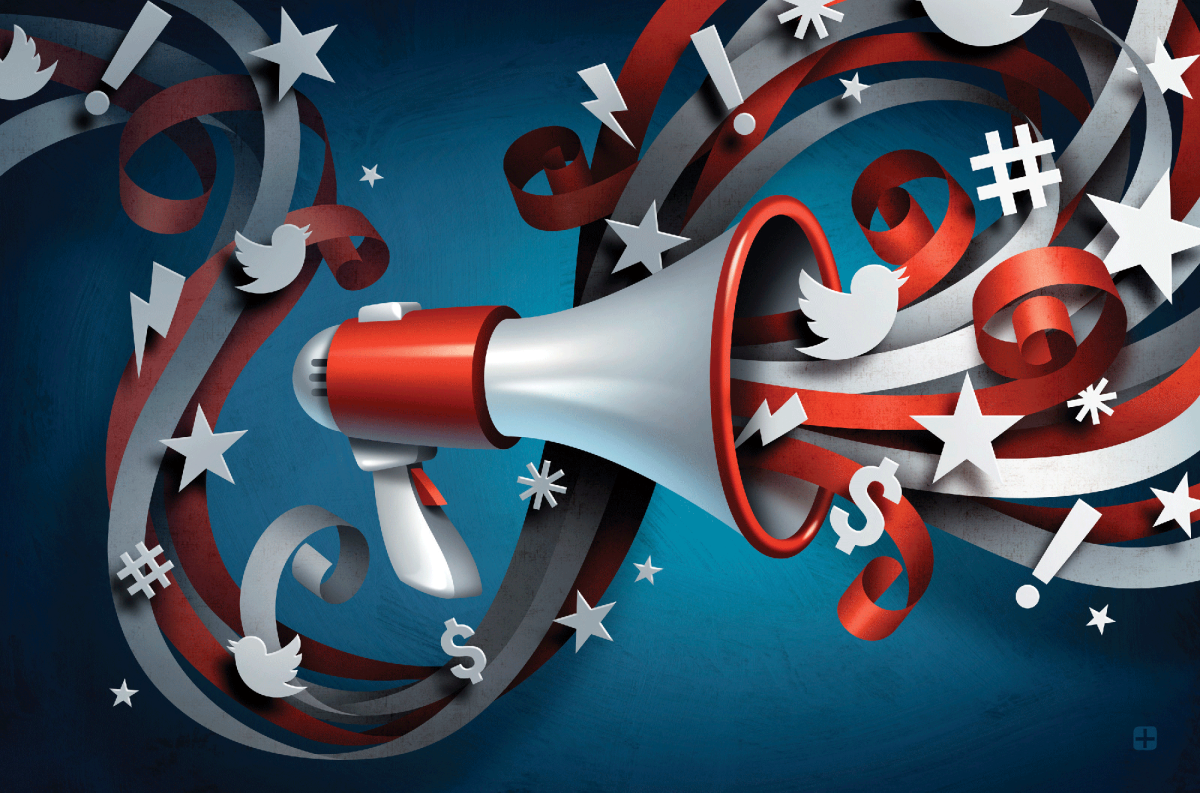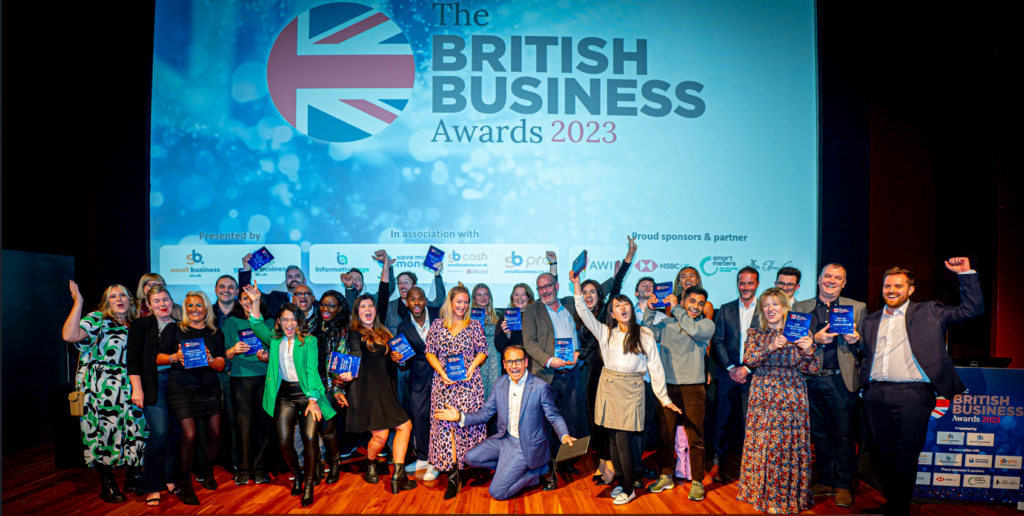
You probably feel like there’s a new business popping up on every corner, making it a real challenge for your small business to get noticed.
To keep your head above water in this fast-paced, ever-changing marketplace, your small business needs more than just a unique product or service—you need a loyal band of followers. That’s where brand loyalty comes in.
What is brand loyalty?
Brand loyalty is the strong, emotional tie a customer forms with a brand, compelling them to repeatedly choose it over competing brands—even when presented with similar products or services. It’s about customers establishing a deeper relationship with a brand, characterized not only by recurring patronage but also by the positive emotions and sense of identity associated with it.

Just look at brands like Apple and Amazon. People are fiercely loyal to them. These businesses keep growing and adapting, no matter what changes come their way, and they do this because they have a strong group of loyal supporters behind them.
So, what’s their secret? How do these big brands keep their people loyal, and how can your small business do the same?
Key takeaways
- Brand loyalty is more than just repeat purchases; it’s about customers forming an emotional connection with a brand and consistently choosing it over competitors—regardless of price or convenience.
- Companies that master the art of cultivating brand loyalty boost their revenue and foster a community of devoted customers who can become brand advocates.
- Consistency is paramount in fostering brand loyalty. From your brand’s visuals to the tone of communication, maintaining familiarity helps customers identify and stick with your brand.
- Providing a top-notch customer experience, staying connected post-transaction, and nurturing employee and customer relationships are pivotal in building a loyal customer base.
- First impressions matter. Highlight your brand’s strengths and uniqueness right from the first interaction to start cultivating loyalty from day one.
- Social proof, via customer reviews or influencer partnerships, can significantly boost your brand’s credibility and foster trust among potential customers.
- Tailoring the customer journey, rewarding loyalty, and active social media engagement are some of the effective strategies for building brand loyalty.
- Exceptional post-purchase support can turn a one-time customer into a repeat patron, while community involvement can earn respect and foster deeper connections.
- Building brand loyalty is not an overnight process—it requires time, consistency, and genuine effort.
- Brand loyalty can be measured through customer retention rates, lifetime value, net promoter scores, and customer satisfaction surveys. Feedback gathered can be invaluable for future strategy and improvements.
With these key takeaways in mind, it’s clear that brand loyalty is more than just consistent purchases; it’s about fostering an emotional connection and delivering an unforgettable customer experience.
But how do you achieve this as a small business? Let’s delve into actionable steps you can take to build brand loyalty and set your business apart in today’s crowded marketplace.
How to Build Brand Loyalty:

1. Build strong relationships based on common values
It’s no secret that we’re drawn to people who believe in the same things we do, and the same goes for businesses. If people see that you share their values, they’re more likely to trust your brand and stay loyal.
So, how can you show this in your marketing strategy?
One great way is by telling a story that speaks to your shared values. Just promoting your products or services might not cut it—adding an engaging and relatable story into the mix can really help to stir people’s emotions and keep them interested.
For example, the 2015 Wrigley’s Extra chewing gum ad perfectly illustrates this strategy. Instead of simply advertising the gum, Wrigley created an endearing love story about a young couple sharing life’s milestones, illustrated on the gum’s wrappers. It showed viewers that love could start from the simple, everyday act of sharing a piece of gum, which struck a chord with many.
Want a free brand review?

Answer 5 short questions and we will send a custom report with actionable insights and specific actions you can take to build a stronger brand.
We just emailed the info to you.
2. Roll out the red carpet for your customers
The golden rule in business? Treat your customers like royalty.
High-quality customer experience is your magic wand for returning people to your business.
Around 80% of customers find customer experience just as significant as the products and services on offer. So, it’s crucial to get this right.
Train your staff to ensure they offer top-tier customer service consistently.
Imagine walking into a local bakery, and the staff greets you by your name and remembers your regular order. That personal touch makes customers feel special and builds a deep connection with your brand.
3. Keep the conversation going post-purchase
Let’s say you run a local bookstore. A customer walks in, buys a book, and leaves – but the interaction shouldn’t end there.
Staying connected after the purchase can turn a one-time customer into a loyal fan. Send them an email or a message asking about their reading experience. Offer them recommendations based on their purchase. This can make them feel valued and increase the likelihood of returning for more.
Ask questions such as:
- How was our product or service?
- On a scale of 1-5, how would you rate the shopping experience?
- How can we improve our customer service?
- What kind of products or services would you like to see from us more?
4. Offer exceptional post-purchase support
Quality customer support shouldn’t end once a purchase has been made. Offering post-purchase support such as setup guides, user tips, or troubleshooting assistance can really boost your brand’s reputation.
Apple offers a fantastic example with its Apple Care program. Customers feel valued and reassured, knowing they can get reliable technical support and additional hardware service options.
5. Your employees are your first brand ambassadors
The people who work for you are not just your workforce – they’re the first customers of your brand. If they love what you do, they’ll naturally convey that enthusiasm to the customers they interact with.
Building a positive and engaging workplace culture, like what Google does with its fun, employee-focused environment, can go a long way in strengthening brand loyalty from the inside out.
6. Highlight your brand’s strengths to make a strong first impression
First impressions matter a ton.
Whether it’s your highly experienced team, unique approach, or high-quality products, make sure potential customers know what sets you apart.
Did you know that nearly 50% of customers begin their journey of brand loyalty from the very first interaction or purchase? That’s right! Your first impression on your customers is incredibly powerful, potentially shaping the course of your relationship with them. Like a first date, this initial connection can spark the flame of loyalty, making your customers eager to return for more.
If you own a local organic food store, your selling point might be locally sourced, fresh produce. Highlight these unique selling points in your store, website, and social media posts to grab customer attention right from their first interaction.
Use high-quality visuals that represent your unique style and mission. Whether it’s your logo, website design, or social media posts, keep your brand colors consistent across all platforms to etch a vivid brand image in the minds of your customers. Imagine running a quirky craft store – let your colorful and creative spirit shine through in every photo you post on Instagram!
But remember, a visually striking brand won’t count for much without fantastic customer service to match. Just like a friendly barista at a local coffee shop can turn your morning latte into a special experience, your business should strive to make every customer interaction memorable and satisfying. The key to winning hearts is in the blend of aesthetic appeal and customer-oriented service.
Show that others trust you.
Got a glowing review? Share it on your social media.
Did a customer tweet about their great experience at your café? Retweet it with a thank you note.
Platforms like Yelp and TripAdvisor are invaluable for brick-and-mortar businesses, while Google Reviews and social media comments can be fantastic for online businesses. Use Instagram Stories to promote customer feedback, or go to TikTok and market your products to younger audiences through creative videos.
Social proof reassures potential customers that they’re making the right choice in choosing you.
8. Stay consistent with your brand
A sudden shift in your brand identity can be jarring for customers.
Just think about your favorite coffee shop suddenly changing its cozy interior to a stark, modern design – it’s unsettling, right? Keep your brand voice, design elements, and quality consistent.
Take Coca-Cola, for example; their branding has stayed largely the same for years, making them instantly recognizable worldwide.
And only consider rebranding only when your existing identity is no longer helping your business grow.
Personalization is no longer just a nice-to-have—it’s a must. Most consumers now only engage with marketing messages customized to their specific interests.
So, take the time to understand your customers’ behavior, preferences, and needs. Then, tailor your services, products, or content accordingly.
For instance, if you own an online bookstore, based on a customer’s previous purchases or browsing history, you could recommend books that match their preferences. A great example of this is how Netflix recommends movies and series based on viewers’ watch history.
10. Reward loyalty with a program
A loyalty program encourages repeat customers by offering rewards for continued business. Starbucks does an excellent job with its Star Rewards program. Every purchase made using their app or a registered gift card earns points (stars), which can be redeemed for free drinks and food items.
For a small business, even a simple punch card system offering a free product or service after a certain number of purchases can make customers feel appreciated and more likely to return.
11. Get to know your customers
In a rapidly evolving market, staying in tune with your customers’ changing preferences is important.
Using customer data can help you provide a more personalized experience. A music store can use customer purchase history to recommend new albums or merchandise, creating a more personalized shopping experience.
12. Leverage influencer marketing
Getting the right influencer to endorse your brand can be a huge boon.
If you run a fashion boutique, partnering with a local fashion blogger can get your brand in front of a whole new audience.
Most brands use an influencer’s engagement and following as a partnership basis. But you don’t always need big-name celebrities; micro-influencers with smaller, dedicated followings can often provide better engagement and credibility.
13. Contribute to your community
Giving back to your local community or a cause that aligns with your brand values can earn you significant respect and loyalty. Patagonia, the outdoor clothing and gear company, is an excellent example of a brand that stands by its mission of environmental stewardship, donating 1% of its sales to environmental causes.
Even as a small business, sponsoring a local sports team, participating in community events, or organizing charity drives can significantly boost your brand image and cultivate customer loyalty.
14. Invest in quality design
Your brand’s visual identity is crucial. An outdated logo or clunky website can turn customers away before they even get to know you.
Investing in quality design can help create a positive impression and build trust in your brand.
Measuring your progress: understanding the levels of brand loyalty
As we’ve explored building brand loyalty, you might wonder, ‘How do I know if it’s working?’
Good question!
It’s essential to remember that brand loyalty isn’t an ‘all-or-nothing’ deal—it’s more like a sliding scale. After implementing all those brand loyalty strategies, you’ll want to measure your progress and see where your customers land on this scale.
So, let’s dive into the different ‘Levels of Brand Loyalty’ and how to spot them in your business.
Awareness Loyalty. This is the first level where customers are simply aware of the brand, have a neutral opinion about it, and might purchase its products or services if the conditions are right (e.g., price, availability).
Consideration Loyalty. At this level, customers will consider the brand among several others when planning to make a purchase. They recognize the brand’s value but aren’t entirely committed yet.
Preference Loyalty. Customers at this level have a preference for the brand over competitors. While they might still compare options, they lean towards this brand for their final purchase decision.
Purchasing Loyalty. Here, customers routinely buy the brand’s products or services. They have a positive experience with the brand and trust its offerings, often ignoring competitors. However, they might still be swayed by a significant change in conditions, such as a competitor’s major price drop or a negative brand experience.
Insistence Loyalty. This is the highest level of loyalty. These customers insist on buying only this brand’s products or services. They have formed a strong emotional attachment to the brand, advocate for it, and are typically resistant to changing their purchasing habits regardless of the actions of competitors.
Examples of brands with strong brand loyalty
Lululemon
Known for its premium yoga and fitness gear, Lululemon has established a cult-like following.
Much of their success is rooted in their community-focused initiatives, which spark loyalty. They offer free fitness classes in their stores and virtually, allowing their customers to engage directly with the brand beyond the shopping experience. This sense of community transcends the store level, making customers feel part of a broader lifestyle movement.
Costco
A quintessential example of offline retail, Costco has harnessed the power of membership exclusivity to foster brand loyalty. Offering high-quality products at bulk prices gives customers the sense of a ‘great deal.’ Add free samples, a generous return policy, and consistent products to this mix, and you have a formula for brand loyalty that has stood the test of time.
Amazon
Amazon’s Prime subscription model perfectly demonstrates a brand loyalty strategy in the online realm. Prime members get exclusive access to free two-day shipping, streaming content, and a host of other perks. This sense of exclusivity, coupled with the convenience Amazon offers, has made it a go-to shopping destination for millions, thus solidifying its brand loyalty.
Etsy
As a platform for small businesses and individual crafters, Etsy has a unique approach to brand loyalty. By creating a space where customers can connect directly with makers, Etsy fosters a sense of personalization and community. Buyers often become loyal followers of specific shops, motivated by the high-quality, unique products and the ability to support small businesses.
Apple
Apple has earned a reputation for crafting state-of-the-art technology with exquisite design, but its towering success isn’t rooted in its products alone.
In 2021, Apple boasted a remarkable brand loyalty score of 92%, which means they retained a higher percentage of their customers than any other company in any industry. This impressive retention stems from the Apple brand’s compelling allure and exceptional customer service.
It’s common to witness throngs of customers queued up at Apple stores, eagerly awaiting the latest product launch, a testament to the company’s compelling brand power. Their expansion into service offerings such as Apple TV and gaming hints at an even deeper hold on customers’ wallets, showcasing the effectiveness of their brand loyalty strategy.
Nike
The unrivaled sportswear king, Nike, owes much of its success to its sophisticated brand loyalty strategy. Notably, its pioneering membership program is a formidable tool that has helped Nike secure their position as the world’s most valuable sports brand. This strategy isn’t just about offering top-notch products; it carefully weaves in elements designed to build and maintain strong customer relationships.
Members are offered exclusive access to product launches and special events, giving them a sense of being part of an elite community. Further nurturing this community spirit, Nike offers free workout classes and training support, adding value beyond just transactions. The brand goes the extra mile with personalized product recommendations and celebratory gifts for birthdays and anniversaries, making members feel genuinely valued.
Nike’s well-executed omnichannel strategy offers a seamless shopping experience, whether in-store, online, or via their mobile app, catering to the varied preferences of their diverse customer base. Like Apple, Nike is a sterling example of how fostering brand loyalty can create a robust, long-lasting customer connection.
These businesses demonstrate that whether you’re operating in the digital or physical realm, prioritizing customer experience, exclusivity, community, and quality are keys to building strong brand loyalty.
Brand loyalty FAQs
1. Why is brand loyalty essential?
Brand loyalty is essential as it drives profitability for businesses. A staggering 65% of a company’s revenue typically stems from repeat business with existing clients. Loyal customers tend to make purchases 90% more frequently than new customers, making brand loyalty a key aspect of long-term success.
2. What are the three types of brand loyalty?
Brand loyalty is often driven by either the heart, head, or hand. ‘Heart’ loyal customers are influenced by intangible benefits, such as a brand’s environmental stance or community impact. ‘Head’ loyal customers base their loyalty on logical reasoning, analyzing why a particular brand deserves their support. ‘Hand’ loyal customers habitually purchase without considering external factors like price, making them extremely challenging to sway.
3. What differentiates brand loyalty from customer loyalty?
Brand loyalty is rooted in perception, encompassing elements like brand image and customer experience. These customers believe a particular brand offers superior quality and service, often disregarding price. Conversely, customer loyalty is tied to financial incentives like competitive prices and frequent discounts, requiring the brand to offer the best deal on the market consistently.
4. How can we identify brand loyalty?
Brand loyalty can be recognized through several indicators. Rapid product sell-outs, waitlists for goods, and high pre-sale quantities suggest strong brand loyalty. These are signs that customers are willing to purchase a product even before its market value is established. Metrics such as customer retention rates and customer lifetime value also help measure brand loyalty; higher values indicate a greater likelihood of repeated purchases.
5. Who are brand ambassadors?
Brand ambassadors are individuals hired by companies to promote their products or services. They generally possess a robust online presence with a network of engaged followers, comprehensive knowledge of the products they endorse, and expert skills in cultivating loyal customer relationships.
6. How can businesses foster brand loyalty?
Businesses can cultivate brand loyalty by delivering consistent quality, excellent customer service, and maintaining a strong brand identity. Rewarding loyal customers with loyalty programs, personalizing customer experiences, and actively seeking and acting upon customer feedback are other effective strategies.
7. Is brand loyalty influenced by price?
While price can influence brand loyalty, particularly in price-sensitive markets, it is not the sole factor. Loyal customers often prioritize aspects like quality, service, brand image, and customer experience over price.
8. How does social media impact brand loyalty?
Social media plays a critical role in nurturing brand loyalty. It offers platforms for brands to engage with their customers, solicit feedback, address concerns, and create a sense of community. Effective use of social media can enhance brand visibility, reputation, and customer satisfaction, contributing significantly to brand loyalty.
9. How does brand loyalty affect marketing costs?
Brand loyalty can significantly reduce marketing costs. Acquiring new customers is typically more expensive than retaining existing ones. Loyal customers bring repeat business and can act as brand ambassadors, spreading positive word-of-mouth and indirectly attracting new customers.
10. Can brand loyalty change over time?
Yes, brand loyalty can change due to various factors like market competition, changes in customer preferences, pricing changes, or negative experiences with a product or service. Therefore, businesses must work on maintaining and improving their brand loyalty continually.
Building brand loyalty isn’t an overnight thing. It takes time, effort, and a lot of consistency. But in the end, the rewards are well worth the effort.




